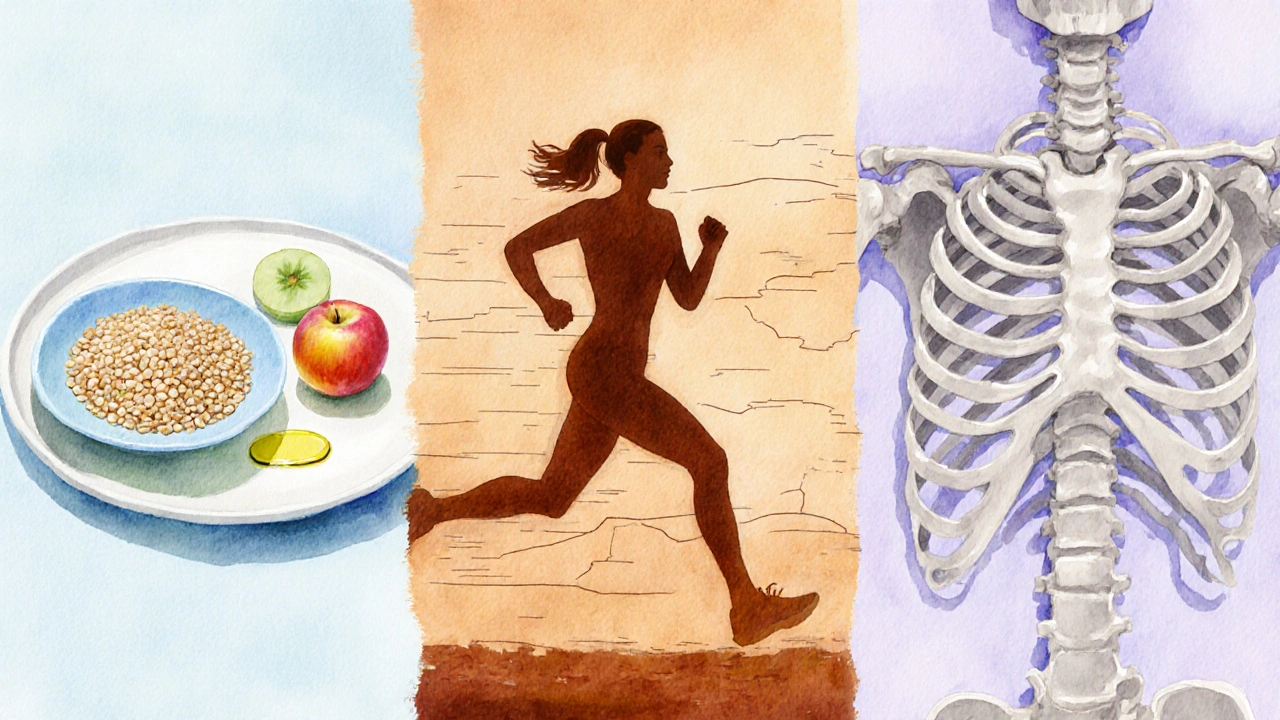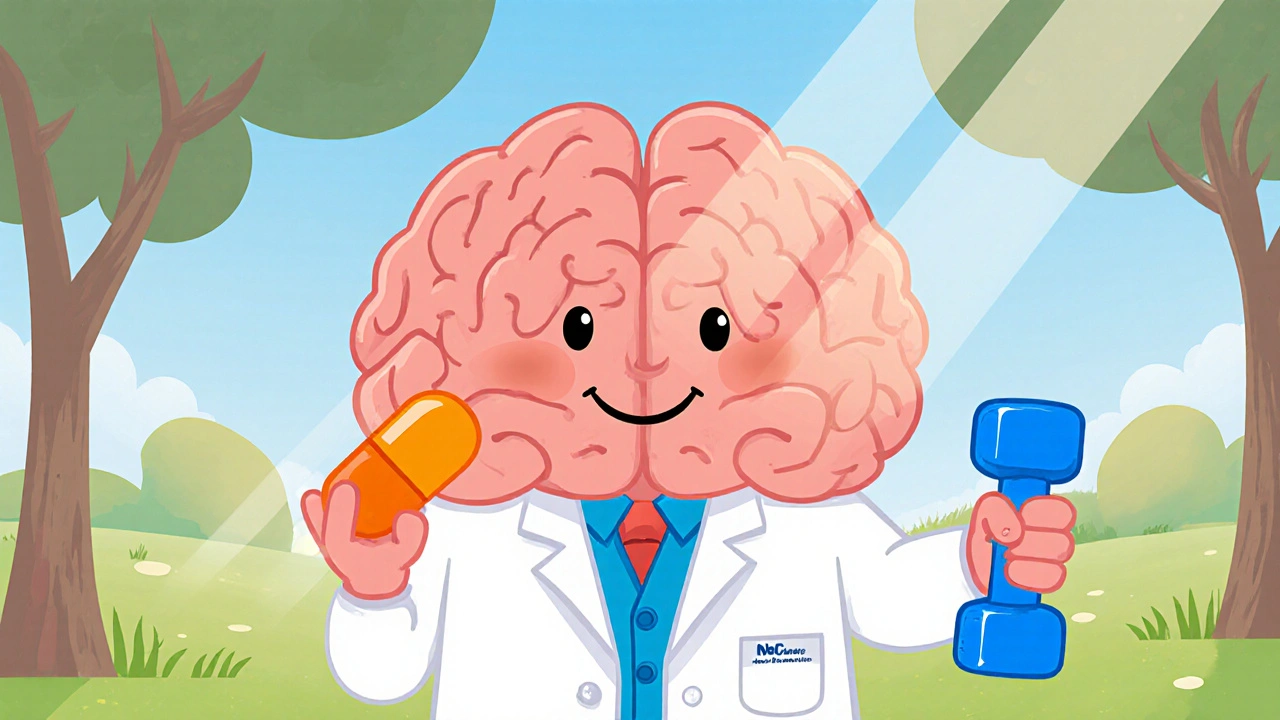Exercise-Induced Amenorrhea Calculator
This calculator estimates your Energy Availability (EA), a key factor in exercise-induced amenorrhea. Enter your details below to see if your energy intake meets the minimum requirements for maintaining regular menstrual cycles.
Your Energy Availability Results
When a dedicated athlete suddenly stops getting her period, panic can set in. The missing flow isn’t just an inconvenience-it can signal deeper hormonal shifts that affect bone strength, fertility, and overall wellbeing. Understanding why amenorrhea happens in the context of training, and learning how to restore balance, empowers women to stay fit without compromising health.
What is Amenorrhea?
Amenorrhea is a medical condition where a woman experiences an absence of menstrual periods for three or more consecutive months. It can be primary (never having had a period) or secondary (stopping after having regular cycles). In athletes, the most common form is functional hypothalamic amenorrhea, triggered by a mismatch between energy intake and expenditure.
Why Exercise Can Disrupt the Menstrual Cycle
Exercise is a physical activity that raises energy demands. When the body doesn’t receive enough calories to cover this demand, it perceives a state of stress.
The brain’s hypothalamus, which regulates reproductive hormones, can shut down its signaling to conserve energy. This chain reaction lowers luteinizing hormone (LH) and follicle‑stimulating hormone (FSH), ultimately halting ovulation and periods.
The Female Athlete Triad Explained
Female Athlete Triad is a three‑part syndrome linking low energy availability, menstrual dysfunction, and reduced bone mineral density. While the Triad originally described elite athletes, its principles apply to anyone who trains intensely while restricting food.
- Low Energy Availability: Not enough calories to support both exercise and basic bodily functions.
- Menstrual Dysfunction: Ranges from irregular periods to complete amenorrhea.
- Bone Health Impairment: Decreased estrogen leads to weaker bones and higher fracture risk.
Recognizing the triad early can prevent long‑term damage.
Key Hormonal Players
Estrogen is the hormone most affected by disrupted cycles. It supports bone remodeling, cardiovascular health, and mood regulation. When estrogen drops, athletes may notice joint pain, decreased stamina, and mood swings.
Progesterone follows ovulation and helps prepare the uterine lining. Low progesterone can cause sleep disturbances and anxiety.
Other hormones-cortisol, leptin, and thyroid hormones-also shift during energy deficits, compounding the problem.

Assessing Energy Availability
Energy Availability (EA) is the amount of dietary energy left for bodily functions after accounting for exercise calories. It’s calculated as:
- Determine total daily caloric intake (food + drinks).
- Subtract calories burned during exercise.
- Divide the remainder by lean body mass (kg). The result is EA in kcal·kg⁻¹·day⁻¹.
Values below 30kcal·kg⁻¹·day⁻¹ are considered low and linked to menstrual disturbances.
Nutrition Strategies to Restore Balance
Nutrition isn’t just about eating more-it's about eating smarter. Aim for a balanced mix of carbohydrates, proteins, and healthy fats while meeting micronutrient needs.
- Carbohydrates: Provide the primary fuel for high‑intensity training. Aim for 5-7g per kilogram of body weight daily.
- Protein: Supports muscle repair and hormone synthesis. 1.2-1.7g per kilogram is typical for active women.
- Fats: Essential for estrogen production. Include omega‑3 sources like salmon, flaxseed, and walnuts.
- Micronutrients: Calcium (1,200mg) and vitamin D (800-1,000IU) protect bone health. Iron is crucial to prevent anemia, especially in menstruating athletes.
Gradually increasing calorie intake by 300-500kcal per day often re‑establishes normal cycles within 3-6 months.
Training Adjustments that Help
Overtraining is a common trigger for amenorrhea. Reducing volume, intensity, or frequency can lower physiological stress.
- Incorporate at least one full rest day per week.
- Swap one high‑impact session for low‑impact cross‑training (e.g., swimming or yoga).
- Periodize your program: cycle through phases of building, peaking, and recovery.
Monitoring tools like heart‑rate variability (HRV) can flag when the autonomic nervous system is overstressed.
When to Seek Professional Help
If periods remain absent for more than six months despite dietary and training changes, consult a healthcare professional. A sports‑medicine physician or an endocrinologist can run blood tests for hormone panels, bone density scans, and assess for underlying conditions like polycystic ovary syndrome (PCOS) or thyroid disorders.

Comparison of Common Exercise‑Related Menstrual Issues
| Condition | Primary Cause | Typical EA (kcal·kg⁻¹·day⁻¹) | Key Symptoms | Recovery Timeline |
|---|---|---|---|---|
| Functional Hypothalamic Amenorrhea | Severe energy deficit | <30 | Absence of periods, low estrogen, bone loss | 3-6months with nutrition + training tweak |
| Irregular Ovulation (Luteal Phase Defect) | Moderate energy deficit + high stress | 30-45 | Short cycles, spotting, mood swings | 1-3months |
| Exercise‑Induced PCOS‑like Symptoms | Excessive weight gain or insulin spikes from high‑carb diet + low activity | Variable | Irregular periods, acne, weight gain | Depends on hormonal therapy & lifestyle change |
Practical Checklist for Athletes Experiencing Amenorrhea
- Track menstrual dates using a simple calendar or app.
- Calculate current Energy Availability; aim for >30kcal·kg⁻¹·day⁻¹.
- Increase daily calories by 300-500kcal, focusing on carbs and healthy fats.
- Ensure adequate calcium (1,200mg) and vitamin D (800IU) intake.
- Schedule at least one complete rest day each week.
- Monitor resting heart rate and HRV; spikes may indicate overload.
- Visit a sports‑medicine clinician if periods don’t return after 3months.
Long‑Term Outlook
Restoring a regular cycle is usually a sign that hormonal balance is returning. Over time, bone density improves, and fertility potential rebounds. Maintaining the habits that helped-adequate fuel, balanced training, and stress management-keeps the risk of recurrence low.
Frequently Asked Questions
Can occasional missed periods be normal for athletes?
Yes, short‑term disruptions can happen during intense training blocks, but if a period is absent for more than three months, it’s worth investigating.
How quickly can diet changes restore my period?
Most women see a return within 3-6 months after raising energy intake and reducing training stress, though individual timing varies.
Is hormone replacement ever needed?
Only in severe or prolonged cases where bone loss is significant. A physician may prescribe low‑dose estrogen to protect bone while lifestyle changes take effect.
Can strength training cause amenorrhea?
Strength training itself isn’t the culprit; it’s the combination of high volume, low calorie intake, and insufficient recovery that drives hormonal suppression.
What role does stress play?
Psychological stress elevates cortisol, which can blunt the hypothalamic‑pituitary‑gonadal axis, compounding the effects of low energy.



5 Comments
kenneth strachan
Congrats on the calculator, finally something to prove I'm not a couch potet.
Mandy Mehalko
Wow, this is super helpful! I love that you can actually see if your energy intake is enough to keep your cycle regular. It gives me hope that I can tweak my diet without dropping the ball on training. Keep it up!
Bryan Kopp
Interesting tool, though I think most people ignore the real issue: they’re not focused enough on their country’s health standards.
Patrick Vande Ven
The concept of Energy Availability (EA) is well‑established in sports science. EA below 30 kcal·kg⁻¹·day⁻¹ is linked to menstrual disturbances, bone loss, and metabolic slowdown. This calculator simplifies a complex equation by using either total body mass or lean mass, which is appropriate for most athletes. However, it does not account for individual variation in resting metabolic rate or hormonal fluctuations. Users should treat the output as a screening tool rather than a definitive diagnosis. Ideally, they would also log macronutrient composition, not just calories, since protein intake influences lean mass preservation. For clinicians, the EA figure can be a starting point for a more thorough evaluation.
Tim Giles
While the calculator offers a convenient snapshot, it would be valuable to integrate a longitudinal tracking feature. Athletes could enter daily values over weeks to observe trends, and the system might flag sustained periods of EA below the safe threshold. Additionally, incorporating a brief questionnaire about sleep quality and stress levels could enhance predictive accuracy, as those factors also modulate hormonal health.